Well some of them are not that small.... As the work proceeds a number of finds start to come to one's notice, in most cases literally lying about the grounds. Despite the fact that they are not from a particular stratified archaeological context any and all of them could tell us something important about the garden's story and so should be recorded. Any further information or ideas about these items will be gratefully received and acknowledged. As excavation work procedes more and more of these will come datable archaeological contexts.
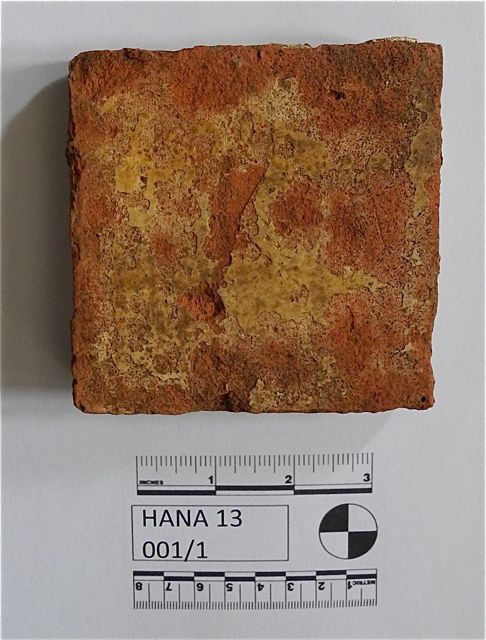 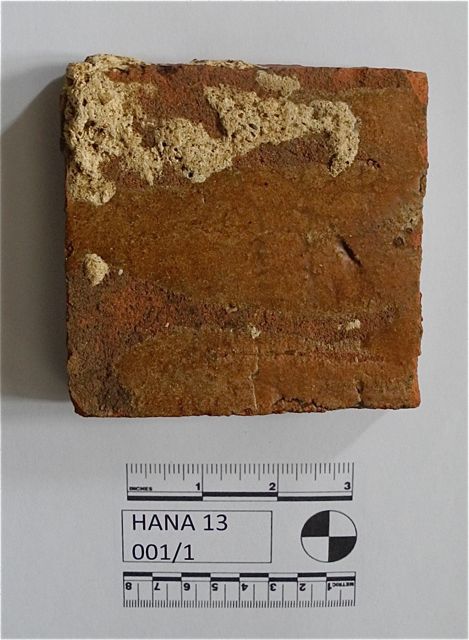 Upper face
Lower face
|
A hand made floor tile, roughly square (110 mm ) and 21mm thick, weighing 558 g. Even mid-reddish brown fabric. Worn creamy yellow glaze on upper face. Lower face has steaks of glaze appearing as a light yellowish brown with traces of a white lime mortar bedding. Regular diagonal striations on two edges indicate cutting to size, possibly with a wire or blade fixed to a sized frame. |
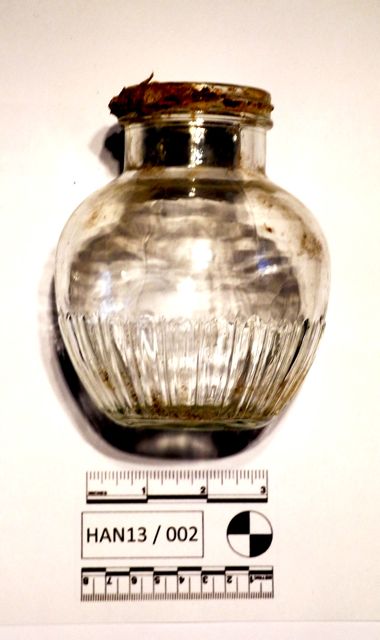 |
This jar was fished out of the lake by the team building the jetty in February 2013. Curiously it seems to have the remains of a metal lid partially in place suggesting it was lost with some of its contents intact or else the empty jar with lid in place was being used for some other purpose. At present it is unclear what the original product was that was sold in it, one suspects pickles or preserves of some kind given the bulbous fluted body and the wide neck, |
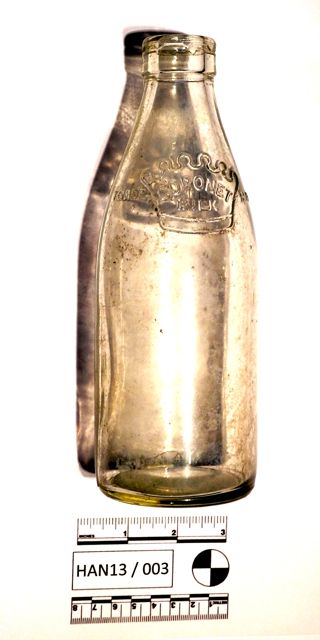 |
Another find from the team building the jetty in February 2013. This milk bottle bears the trademark 'Coronet Milk' and on then other side the letters 'U.D. (W) LD.' Some initial research suggests that this may indicate the produce of United Dairies who were based in Wiltshire until they were taken over by Unigate in 1959. Again the question arises what was it doing in the Lake, milk bottles traditionally were recycled and this one is a long way from Wiltshire. Was it deposited during the period when the castle was a school?  United Dairies plant in Melksham |
w
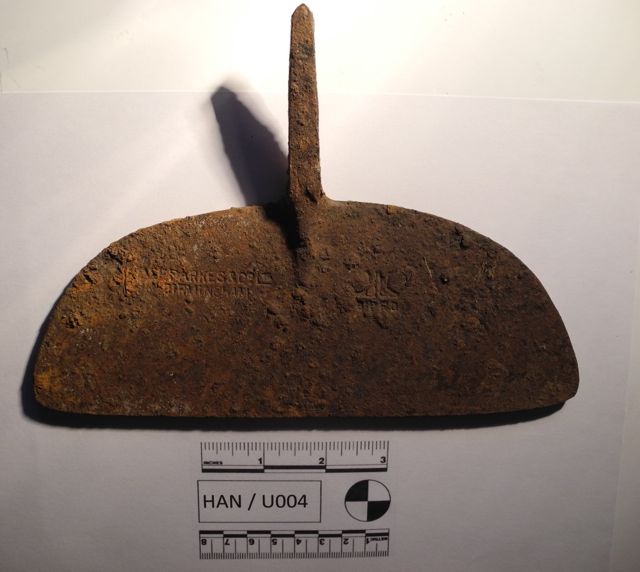 |
Some kind of edged iron garden implement , manufactured by A. and F. Parkes of Dartmouth Street, Birmingham. The business was founded in 1837 and incorporated in 1887 and seems to have still been going in 1961. It bears their famous 'BIPED' trade mark with a logo showing, somewhat strangely perhaps, a pair of feet. What is less clear is what the tool was for. The obvious point of identification would be to describe it as a Dutch or push hoe but what makes it very unusual is the fact that it has a shank that would have been driven in to the end of a wooden handle or shaft which would have been secured with a ferrule to stop the timber splitting. Virtually all other hoes are socketed onto their handles, the only exception seems to have been smaller tools for single handed operation where the forces would be lessened. Does this indicate and early date for the piece? Perhaps nineteenth rather than twentieth century? |
w